A growth mindset is a crucial concept to introduce to middle school students, as it empowers them to embrace challenges, learn from failures, and develop a positive attitude toward their own abilities.
Fostering a growth mindset in these formative years can significantly impact their academic, personal, and future success.
To help educators and parents instill this mindset, here are engaging growth mindset activities for middle school students.
These activities aim to cultivate resilience, perseverance, and a belief in the power of continuous learning.
“Failure Reflection” Journal:

Encourage middle school students to keep a journal specifically for reflecting on their failures and setbacks. In this activity, students can document instances where they faced challenges, made mistakes, or fell short of their goals. They should then write about what they learned from those experiences, how they can improve, and what strategies they can employ in the future. This activity promotes self-awareness, resilience, and the understanding that setbacks are valuable opportunities for growth.
“Obstacle Course” of Challenges:

Create a series of challenges or tasks that require students to think creatively and problem-solve. The challenges should be intentionally difficult and varied in nature, requiring students to step out of their comfort zones. As students work through the obstacles, they learn to approach challenges with a positive attitude and view difficulties as chances to develop new skills. After completing the obstacle course, engage students in a discussion about the strategies they used and the lessons they gained.
“Growth Mindset TED Talk” Discussion:
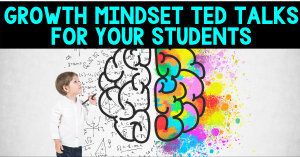
Show a TED Talk or similar video that explores the concept of a growth mindset. Afterward, facilitate a class discussion where students share their reactions, insights, and takeaways from the talk. Encourage them to relate the concepts discussed to their own experiences and how they can apply them to their learning journey.
Related: 20 Creative Honesty Activities for Kids
“Positive Affirmations” Art Activity:

Guide students in creating a visual representation of positive affirmations. Provide art supplies and ask students to design posters or artwork that depict growth mindset affirmations, such as “I can learn from my mistakes,” “Challenges help me grow,” or “Effort is the path to mastery.” Display these affirmations around the classroom to serve as daily reminders of the power of a growth mindset.
“Mindset Puzzles” Brain Teasers:

Develop a set of brain-teasing puzzles or riddles that require creative thinking and persistence to solve. These puzzles should progressively increase in difficulty. As students work on the puzzles, they’ll practice embracing challenges and finding alternative approaches when their initial attempts fail. Afterward, discuss the strategies students employed, how they managed frustration, and the satisfaction of finding solutions through perseverance.
“The Power of YET” Vocabulary Exercise:

Introduce the concept of the word “yet” as a powerful addition to students’ vocabulary. Have them create a list of things they haven’t mastered but would like to learn. For example, “I haven’t mastered algebra YET.” This activity helps students recognize that not knowing something now doesn’t mean they won’t learn it in the future. It shifts their perspective from a fixed to a growth mindset, fostering a sense of possibility and progress.
“Growth Mindset Book Club” Discussion:

Select a book that showcases characters overcoming challenges through perseverance and a growth mindset. Assign chapters for students to read and discuss. Encourage them to reflect on the characters’ attitudes toward setbacks, their strategies for improvement, and how these lessons can be applied to their own lives. The book club approach promotes critical thinking and allows students to connect growth mindset principles to real-world scenarios.
Related: 24 Wonderful Writing Prompts for First Graders
“Failure and Success Story” Podcast Creation:
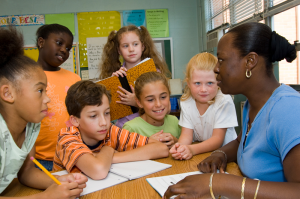
Divide students into pairs or small groups and have them research a notable figure who experienced failures on their path to success. In this activity, students can create a podcast-style presentation that includes details about the person’s failures, the lessons they learned, and the accomplishments they eventually achieved. This multimedia approach engages students’ creativity while reinforcing the idea that setbacks are stepping stones to growth.
“Goal-Setting and Reflection” Portfolio:

Guide students to set both short-term and long-term goals related to their academic, personal, or extracurricular pursuits. Have them create a growth mindset portfolio where they document their goals, the steps they’re taking to achieve them, and reflections on their progress. Regularly revisiting and updating their portfolios encourages students to embrace growth, track their development, and adapt their strategies as needed.
“Positive Peer Feedback” Activity:

Organize a session where students give each other constructive feedback on a recent project or assignment. Emphasize the importance of focusing on effort, strategies, and improvement rather than solely on outcomes. This activity encourages students to acknowledge and appreciate each other’s growth efforts. It also reinforces the idea that progress is a collaborative and continuous endeavor.
“Positive Self-Talk” Daily Affirmations:

Guide students to create a list of positive affirmations that align with a growth mindset. Encourage them to repeat these affirmations daily, either in the morning or before important tasks. By practicing positive self-talk, students learn to reframe negative thoughts and cultivate a more optimistic and resilient outlook on their abilities and challenges.
“Learning from Mistakes” Role-Playing Activity:
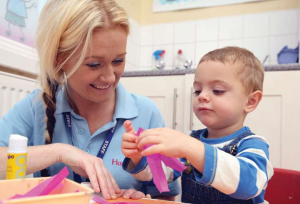
Organize a role-playing scenario where students act out situations involving mistakes and challenges. Provide them with different characters and scenarios, and ask them to improvise how each character responds to setbacks. Afterward, facilitate a discussion about the various approaches and strategies presented. This activity helps students understand that there are multiple ways to handle failures and that learning from mistakes is a valuable skill.
“Growth Mindset Reflection” Video Journals:

Invite students to create video journals in which they discuss their experiences with adopting a growth mindset. They can share instances where they faced challenges, how they initially felt, the strategies they used, and the outcomes they achieved. This multimedia approach encourages self-expression, reflection, and the articulation of personal growth stories.
“My Personal Heroes” Collage Project:

Encourage students to identify individuals they admire who have demonstrated a growth mindset in their lives. Have them collect images, quotes, and information about these role models to create collages. During a presentation of their collages, students can explain why they chose these figures and how their stories inspire them to adopt a similar mindset.
“Constructive Feedback Circle” Peer Workshop:
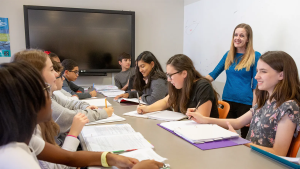
Arrange a peer workshop where students provide and receive constructive feedback on a recent assignment. Create guidelines for offering feedback that focuses on strengths, areas for improvement, and actionable suggestions. This activity teaches students how to provide and receive feedback in a way that supports growth and learning, fostering a culture of continuous improvement.
“Mindset Mentor” Guest Speaker Series:

Invite guest speakers from diverse fields to share their personal stories of overcoming challenges and cultivating a growth mindset. Students can listen to these speakers, ask questions, and gain insights into how individuals in various professions have embraced setbacks as opportunities for growth. This real-world connection reinforces the relevance of a growth mindset beyond the classroom.
“Growth Mindset Reflection” Art Gallery:

Assign students to create artwork that symbolizes their understanding and interpretation of a growth mindset. This can include paintings, sculptures, or digital art. Display the pieces in a classroom art gallery and encourage students to discuss their works, explaining the symbolism and how it relates to their own experiences of growth and learning.
“Growth Mindset Theater” Skits and Scenes:

Challenge students to create short skits or scenes that illustrate the difference between a fixed and a growth mindset. They can craft scenarios that showcase characters facing challenges, experiencing setbacks, and either succumbing to fixed mindset thinking or embracing growth-oriented attitudes. This activity encourages creativity and a deeper understanding of mindset concepts.
“Learning Journey” Time Capsule Activity:
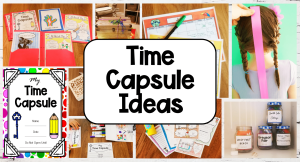
Guide students in creating a time capsule that represents their growth journey over the course of the school year. Have them include written reflections, drawings, and mementos that symbolize challenges they’ve faced, skills they’ve developed, and lessons they’ve learned. The time capsule serves as a tangible reminder of their progress and the value of a growth mindset.
“Growth Mindset Pledge” Classroom Display:

Collaboratively draft a growth mindset pledge as a class. Display the pledge prominently in the classroom, and have each student sign it as a commitment to embracing a growth mindset. This activity fosters a sense of unity and accountability among students, encouraging them to support each other in their journey of learning and growth.
“Growth Mindset Reflection” Podcast Series:

Guide students to create their own podcast episodes centered around growth mindset themes. They can interview classmates, teachers, or even professionals to gather diverse perspectives on challenges, failures, and learning experiences. Through producing and sharing these podcasts, students enhance their communication skills while exploring the nuances of a growth mindset.
“Growth Mindset Journal” Creative Writing Challenge:

Encourage students to write short stories or narratives that feature characters undergoing personal growth and transformation. These stories can showcase characters facing difficulties, changing their perspectives, and applying growth mindset principles to overcome obstacles. This creative writing exercise reinforces the idea that growth is a continuous process.
“Growth Mindset Science Experiment” Activity:

Design a science experiment that requires trial and error, hypothesis testing, and iteration. Students can work in groups to hypothesize outcomes, perform the experiment, analyze results, and make adjustments based on their findings. This hands-on approach teaches them that mistakes and adjustments are essential components of the scientific process.
“Growth Mindset Movie Analysis” Discussion:

Select a movie or film scene that depicts characters demonstrating growth mindset traits. Screen the selected segment and engage students in a discussion about the characters’ attitudes, behaviors, and transformations. This activity encourages critical thinking and helps students identify real-world applications of growth mindset concepts.
“Growth Mindset Puzzle Hunt” Classroom Game:

Create a puzzle hunt game where students solve a series of puzzles related to growth mindset principles. The puzzles can be placed around the classroom or school grounds. As students decipher clues and solve challenges, they internalize key growth mindset concepts while engaging in an interactive and engaging activity.
Related: 20 Counting Activities for Preschoolers & Kindergarten

